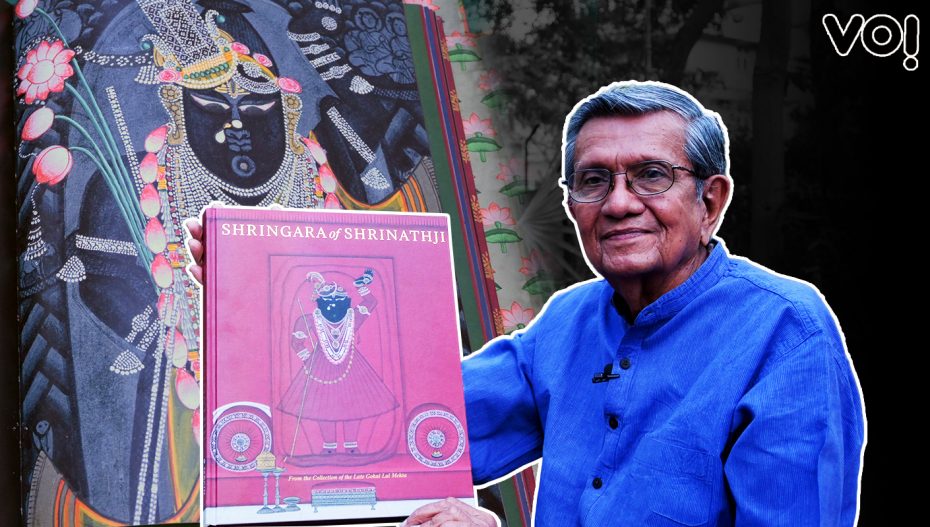In 1959, Amit Ambalal got his first pichwai. It cost him Rs 150, a huge amount then. When he brought the Shrinathji pichwai home, his father frowned at him. He said, “Why did you spend so much money on this rugged cloth?”
The pichwai–large devotional Hindu painted pictures, normally on cloth, which portray Krishna–is still hanging in Ambalal’s living room. He still loves his pichwai and this explains his love for this artwork and Shrinathji.
Amit Ambalal is an eminent contemporary Indian artist whose work forms part of prestigious collections in India and abroad. His latest offering is Shringara of Shrinathji. It is a captivating volume that catalogues a set of previously unpublished miniature paintings of the Pushtimarg tradition from the collection of late Gokal Lal Mehta.
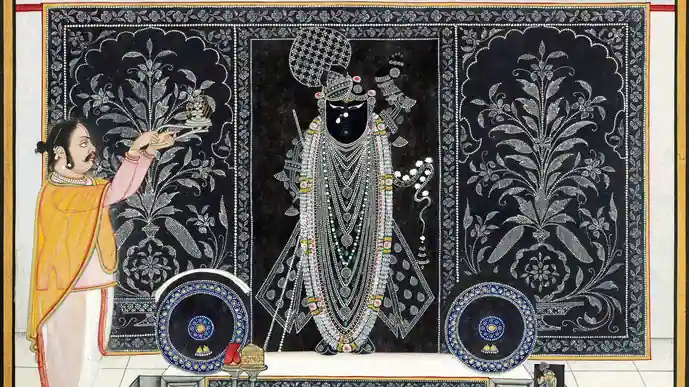
A Vaishnava sect founded by Vallabhacharya in the 15th century, Pushtimarg lays emphasis on worship of the deity Shrinathji through kirtan (devotional poem-songs), bhog (offerings of food and beverages), shringara (offerings of dress and ornamentation), decoration and painting. The paintings represent the Nathdwara school. The image of Shrinathji is enshrined in a temple in Nathdwara, Rajasthan.
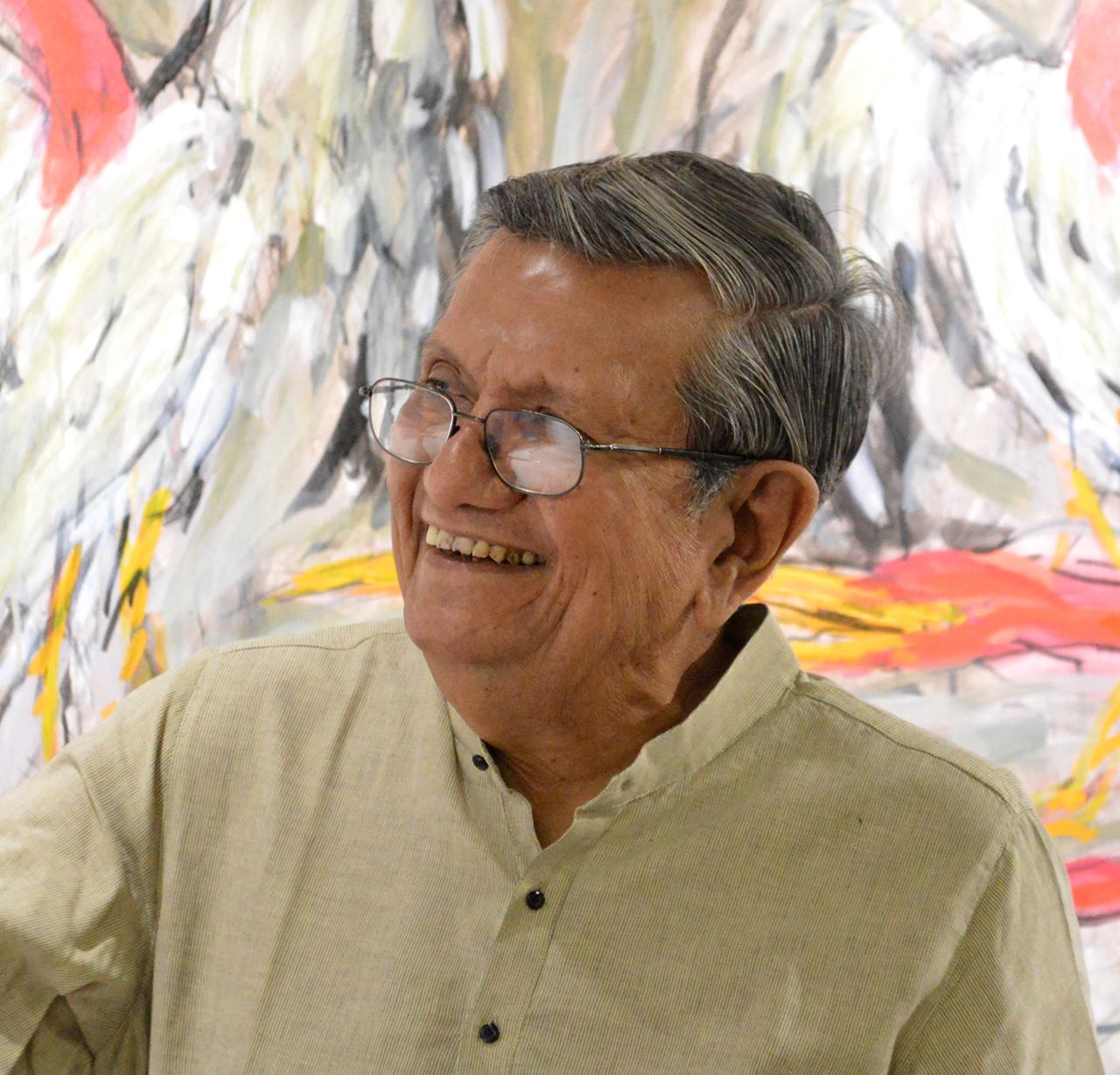
The sixty splendid artworks reproduced here were executed during the stewardship of Tilkayat Govardhanlalji (1862–1934 AD) by Sukhdev Kishandas Gaur, the chief artist of the temple.
Documenting the high level of skill in draughtsmanship, portraiture and composition, an essay by Ambalal accompanies the lavish, high-quality photographic reproductions.
The collection is significant as it belongs to the golden period of Nathdwara painting and represents high-quality workmanship. While little is known of many artists of this form, this collection highlights the contribution of Sukhdev Kishandas Gaur. “My mother is a Vaishnav. So, I grew up learning about Shrinathji but I am not a follower in the conventional sense. For me, Shrinthji is a God of art. I love him as an artist.” Ambalal said sitting in the verandah of his house in Ahmedabad.
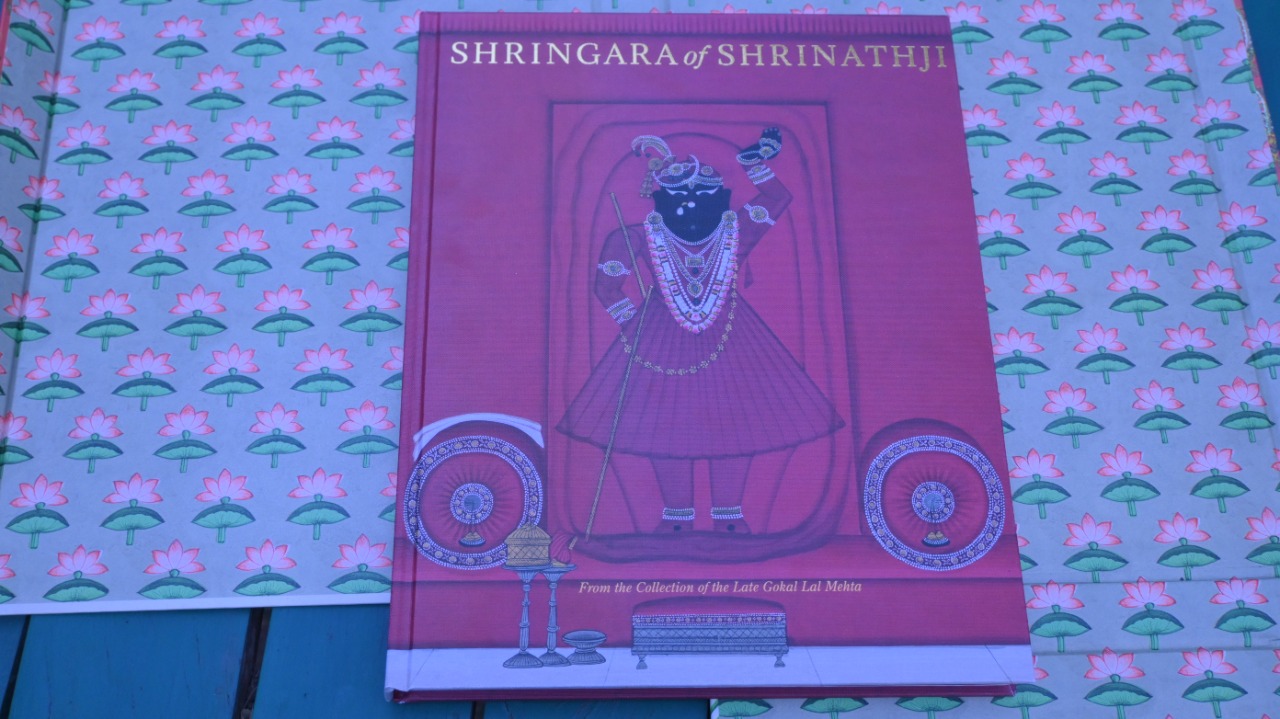
Over the years, Ambalal has worked extensively on the subject of Shrinathji but he chose this project as he found it challenging. “Here, I received pictures of Shrinthji with nuanced differences. The paintings were made in 1876 during the golden era of temple in Rajasthan. I had to read between the lines and make sense of this work.”
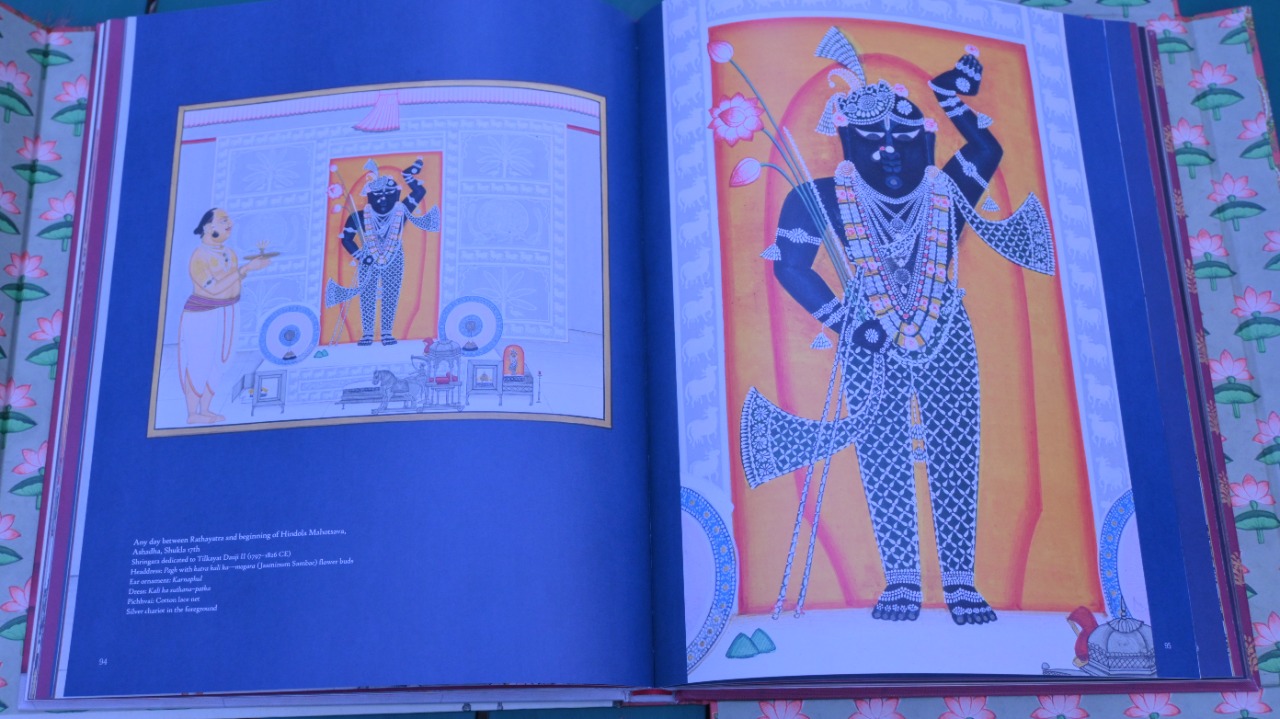
Ambalal’s interest in Nathdwara paintings of Rajasthan inspired him to publish a seminal book titled Krishna as Shrinathji. He also held an exhibition of his personal collection of Nathdwara Paintings, in Delhi.
He finds pichwai colourful, joyous and a marvelous piece of art. “Artists used natural colours and they didn’t put any stroke just for the sake of it. There was simplicity and accuracy back then. I’m in love with this artform.”


